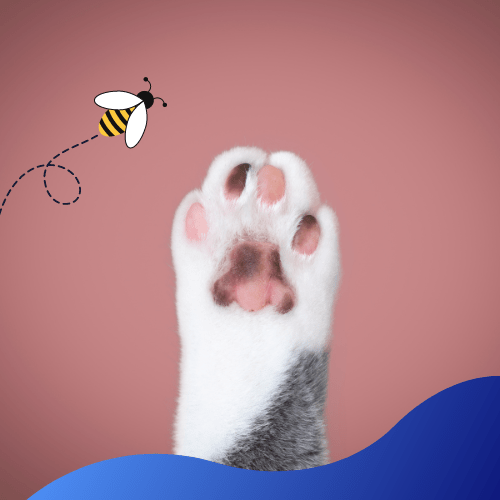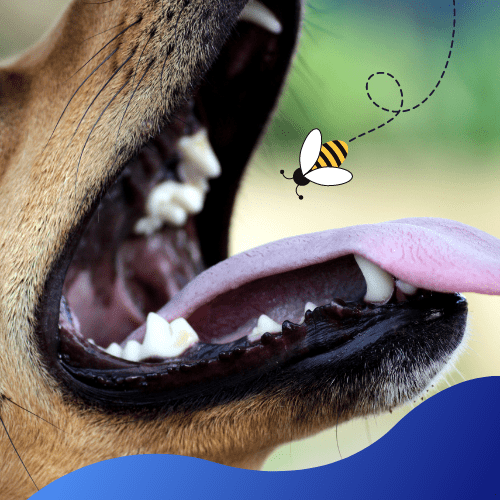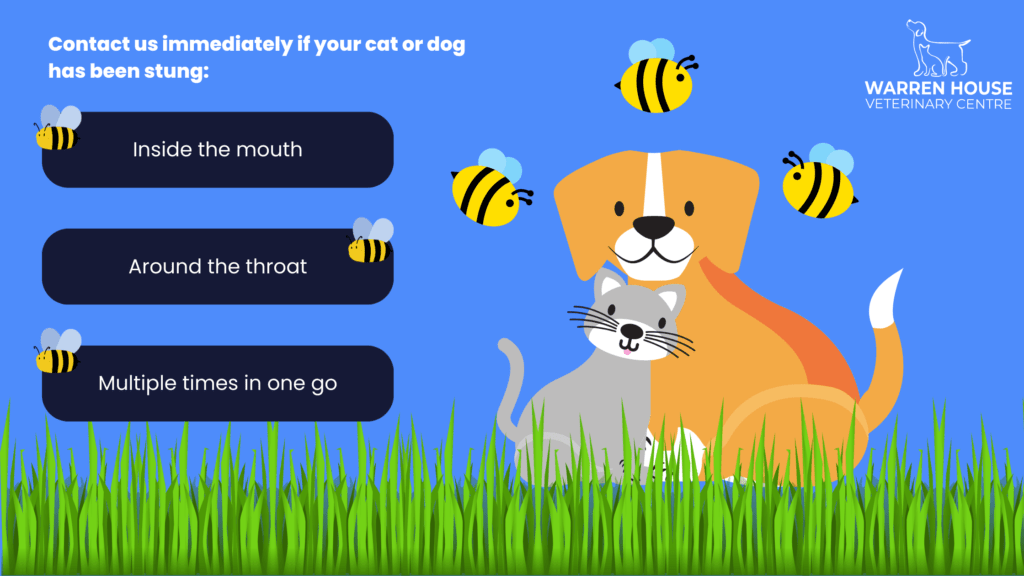
Wasp and bee stings are most common in spring, summer, and early autumn. Dogs and cats are stung on their paws or around the face and usually develop minor pain, irritation, or swelling. In some cases, the effects of a sting can be more serious.
Most stings can be managed at home, but in some cases, they can be more serious. Stings inside the mouth or the throat, being stung multiple times and allergic reactions are all emergencies that require urgent veterinary treatment.
What are the side effects of a bee or wasp sting?
- Nibbling the area stung
- Yowling or vocalising more than usual
- Swelling in the specific area
- Pawing at the place they have been stung
- Whining
- Agitation
- Swelling
- Lumpy skin
- Biting, nibbling, or pawing at the area stung
- Drooling
Stings to the paw
Dogs and cats are often stung by treading on a bee or wasp, or when trying to bat them away. If they are stung on the pads of their paws it might be difficult for you to see or remove the sting.
As a result of the sting you may notice your furbaby start to limp, or may chew, lick or bite at the sting.

Stings Inside the mouth
Dogs and cats may be stung on the tongue or inside the mouth or throat, especially after trying to eat a bee or a wasp. Stings in this area can cause the throat to swell and may block your furbaby’s airway, making it difficult for them to breathe.

Allergic reaction to bee or wasp stings
Some cats and dogs are allergic to the poison that is injected by a bee or wasp sting. This can happen very quickly or may be delayed a few hours, these are the signs you should look out for:
- Weakness or collapsing
- Vomiting
- Rapid breathing
- Difficulty breathing
- Excessive swelling around the sting
- Pale gums
- Diarrhoea
- Vomiting
- Diarrhoea
- Severe swelling around the sting area
- Swelling around the mouth and neck
- Weakness or collapse
- Disorientation
- Rapid or difficulty breathing
What should I do if my Cat or Dog is stung by a bee or wasp?
For most dogs and cats that are stung by a bee or wasp, the effects are mild and manageable at home, unless you suspect they have had an allergic reaction, then seek immediate vet attention.
How to remove a bee or wasp sting?
Bees leave their sting behind, allowing the venom to pump into their victim. If unsure, look for a sting and remove it using a thin, flat object like a credit card or fingernail. Avoid pinching the sting out with fingers or tweezers, as this can squeeze more poison into the dog’s body, causing more pain and a larger reaction.
Wash the area
Gently clean the area that’s been stung using soap and cool water. This can help prevent infections and can reduce the risk of further problems. It’s likely that this area is going to be particularly sensitive and painful, so make sure you don’t scrub the area hard.
Ease the swelling
Place a clean towel under cold running water, wring it out, and apply it to the affected area. This will help reduce swelling and will also calm your dog. Ice is also helpful, but do not apply ice directly to the cat’s or dog’s skin. First, place a thin cloth over the skin and place ice on it, or wrap the ice cubes in a tea towel. If you don’t have ice cubes, you can use a bag of frozen peas instead. Don’t let it sit for too long, five to ten minutes should be enough.
Can I give my dog or cat antihistamines?
Over-the-counter antihistamines are sometimes recommended when your cat or dog has been stung, but certain ingredients in different brands can be fatal to animals. If you choose to do this you should always check with your vet to make sure you are giving the right drug and in the right quantity for your cat’s or dog’s size and weight.
Keep your cat or dog calm
If your cat or dog has been stung it is more than likely they will feel agitated and upset by the painful sting. To help them, keep yourself calm, and try to distract them with lots of positive attention.
Monitor your furbaby
After your dog or cat has been stung, it is important that you keep a very close eye on them for a few hours, just in case they show any signs of an anaphylactic reaction. In very rare cases, allergic reactions can be delayed, so if your pet shows signs of an allergic reaction within 24 hours of being stung it’s still just as important to contact your vet.

Thanks for reading, until next time…
